CLASS OF 1958
by
Class of 1956

PROLOGUE:
By any measure, Colonel Bob Fullerton (aka: Tex) is a genuine American Hero. After GMS and an attempt at College, he chose to make the military his life’s work, and dedicated himself to being a Soldier in the U.S. Army to fight his country’s battles wherever they may be. In his case, it was primarily Viet Nam (two tours) and three tours in Korea, a tour in Germany (nothing hostile there except the women), Dominican Republic and elsewhere. This Hero shuns publicity. Here is a quote from Colonel Tex: “Deak, I have thought a lot about your overly kind offer to write my “life story” article, BUT – I do not feel worthy of your efforts. I have had a great and normal life. Nothing spectacular or exemplary.”
I, personally, would have expected Tex to say something like that. The Colonel is a Soldier’s Soldier. He’s is a Patriot and Warrior who has risen from being the 1st Sergeant in Company “D” at Greenbrier Military School to full bird Colonel in the United States Army. I think most would agree that is quite spectacular and exemplary.
Tex is the perfect example of a Greenbrier boy who became a man while there and made good in his chosen profession in spite of tremendous challenges and odds against it. He is the first to give credit to his early training at Greenbrier and in the Army. Time and space does not permit telling the entire story of Tex’s life; however, I think you will find what there is here of the life of this Warrior will be interesting and worth reading. HOO AH!
COLONEL ROBERT JAMES FULLERTON,
UNITED STATES ARMY
EARLY LIFE AND THE GREENBRIER MILITARY SCHOOL YEARS
Bob Fullerton was born on July 9, 1940 at Columbus, Ohio. His parents divorced when he was two years old and he was raised by his Mother. He had lost two young sisters to a tragic house fire shortly before he was born. Bob grew up on a farm near the little town of Dublin, Ohio (a Columbus suburb) and had a rather normal life for a farm lad. He was active in 4-H, Jr. High Band, played basketball, and caddied at the Scioto Country Club. Dublin, Ohio, is not only the home of my daughter, Mary Kathryn and husband, Kevin Zuza, it is also the home of the greatest golfer the world has ever known, Jack Nicklaus. Jack and Tex are the same age, so when Tex was a Caddie at the Scioto Country Club, Jack was hitting 13 buckets of balls a day and getting ready to win Amateur Championships while a student at The Ohio State University, which is also one of my Alma Maters (MBA, Fisher College of Business)
He came to Greenbrier Military School (GMS) the 1955/56 school year and was assigned to Company “D”. Company Commander was Cadet Captain Hosea “Johnny” Smith from Elkins, West Virginia. 1st LT Deak Roberts from Vienna, West Virginia, commanded the First Platoon and 2ndLT Lee Hadley from Marietta, Ohio, the Second Platoon. Fullerton wanted us to call him “Tex”, and we did and do to this day. Cadet Private Fullerton went into one of Hadley’s Squads and was not very visible during that first year. I remember him as a rather thin, pleasant young man with a nice smile and disposition. We were glad to have him in “D” Company, but he was totally “green” regarding anything military, and obviously one who would need intense training. Tex made the following remarks:
“I arrived at GMS with too much mouth and attitude. I was assigned to Company ‘D’ where I remained for my three years. After walking my share of ‘The Beat”, it did not take me too long to get the message and get with the program. There were many Cadets that were my role models. I was really impressed with my “D” Company Officers. Company Commander, Cadet Captain Hosea ‘Johnny’ Smith, both impressed and terrified me. Then there was 1stLT Deak Roberts, a model of military bearing and decorum, and 2ndLT Lee Hadley who took me under his wing when I was assigned to his Platoon. I was also impressed with the military bearing of Cadets like Benny Williams, Charlie Duncan, Duke Schneider, and Bob Gamba. These outstanding Cadets were prime examples of what I wanted to become.
In my Junior Year (1957) , I was proud to see Lee Hadley become Company Commander and Hosea Smith become Battalion Commander Cadet Major. We all wore our ‘Crack Company’ ribbon proudly from our previous year effort and training under “D” Company leadership. The Junior Year marked me as a 100% convert to the military school system and I can truthfully say the school, the academic program, the staff, and the excellent Cadet leaders mentioned above instilled in me a superb sense of duty, truth, honor, integrity, loyalty, determination, trustworthiness, and made me a results-oriented individual with a can-do attitude. All of this was preparing me for my future as a professional Army Officer.
In 1958, my senior year, I proudly served as Company “D” Cadet First Sergeant where I had the opportunity to refine my many lessons learned. I had the good fortune to serve with Owen Carney as my Company Commander along with Platoon Leaders, Tom Wilson and Bob Duff. I enjoyed my final year, but spent too much time on the campus. I was a complete strike-out socially. I believe I was the poorest Cadet in the Battalion. I got $2.50 a week and pulled a dollar out of that for my Mother at Christmas time. I was never able to eat downtown and never could get a hamburger at Wally’s Canteen. I learned to eat open-face cheese sandwiches in the Mess Hall on Mondays and could only get a nickel candy bar at the movie..
I was absolutely terrified and intimidated by the women at Greenbrier College for Women (GCW). I felt like a poor pauper and clod around them. They seemed so much more sophisticated, wealthy, mature, and had lived a life of Class. I could only love them from afar, and could never have afforded to take one to a movie. That lack of social experience cost me some bad decisions later in life.”
After graduating from Greenbrier in 1958, Tex returned to his home in Columbus (Dublin), Ohio, where he started college at The Ohio State University. In his Freshman Class were the likes of Jack Nicklaus, Tom Weiskoff, John “Hondo” Havlichek, and Jerry Lucas. Tex said, “ I regret to this day not applying myself. I got low grades and left Ohio State after two years, something I regret to this day.”
INTRODUCTION TO A LIFETIME CAREER

“I joined the Army in January, 1962. Spent two years as an enlisted man, which taught me lots about a soldier’s life, what they expect, and also how to get away with “tricks.” I had basic training at Ft. Leonard Wood, Missouri, in the heart of a frigid winter. Not much fun. I then took Advanced Infantry Training (AIT) ww3at Ft. Chaffee, Arkansas. The Berlin crisis was ongoing and the Kentucky National Guard Division had been called up to provide training. I “hoped” for Infantry OCS, after AIT, but paperwork delay and loss, found me on my way to Korea for a 13-month tour with the 7th Infantry Division. I served in a mortar platoon and life was grim. We were the farthest northern U.S. unit, near the DMZ. We lived in Quonset huts with pot-bellied stoves. Once again – good lessons to be learned for troop leadership later in life. Now I had a GMS background and two years as a ground-pounder.“
Then the day came when Tex got the call to go back to the States and go to Infantry Officer Candidate School (OCS) at Ft. Benning, GA. To hear Tex tell it, OCS was a whirlwind of yelling, stress, activity, long hours, and pressure. Out of the original 160, only 90 graduated. Tex broke no school records, but finished 13th in his class. He said he would not trade his OCS training for anything. Six months later Tex was commissioned the U.S. Army’s newest 2nd LT. He went from there to Airborne School where he earned Airborne Wings after five jumps, and was assigned to the elite 11th Pathfinder Detachment in the new 11 Airborne Assault Division based at Fort Benning. Tex loved being in an elite Airborne Unit. The Division was given 450 helicopters and was the Army’s first test unit for air mobility. Tex took a five week Pathfinder Course to get qualified. If you don’t know, a Pathfinder is the one that goes in first to prepare a battlefield landing zone. Not exactly the safest job in the world. These guys are trained to go into enemy territory by any means possible (air, land or sea) to prepare drop zones, operate airfields, and prepare helo landing zones day or night. Not an easy task, and extremely dangerous.
TIME TO GO INTO HARM’S WAY
After a short stint in the Dominican Republic, Tex became part of the 1st Cavalry Division -- Airmobile. He returned home in time to marry his first wife, then immediately deployed to Vietnam on the USS Darby (AP 127), a troopship out of mothballs. As they passed through the Panama Canal, Tex was promoted to 1stLT on the Bridge of the ship. The next 30 days was at sea headed for Vietnam. Training continued with Physical Training and rifle shooting off the fantail, map study and country studies.

They had no idea what to expect when they got in-country. Here is the description in Tex’s own words:
“Arriving off the beach at Vietnam, we climbed down nets over the side of the ship to the waiting Navy amphibious landing craft (LCVP - Landing Craft Vehicle Personnel, aka Higgins Boats) that would take us to the beach. We rushed into the shore with rifles loaded and locked ready to storm the beach and kill anything that moved. As the fearless leader, I stood up by the ramp in order to be first off when they hit the beach. I could feel the bottom of the boat ride up on the sand. The ramp came down and hit the water and we stepped out into surf deeper than we expected. Several of us eager Beavers were dumped into the surf and when we picked our wet asses up there was General William “Westy” Westmoreland standing a few feet away observing this heroic landing with a faint smile. It was quite embarrassing. We had a lot to learn about ‘Hitting the Beach’.”
Tex and his unit built the An Khe Base which became home for the next year. They stayed deployed with various infantry units setting up landing zones as needed. They operated mostly in the Central Highlands and were part of the la Drang Valley operation which earned the Presidential Citation for the Division.
Tex saw a lot of combat in Vietnam, but there is not room, nor time, to tell all. Regardless, I can give you one example. Tex, and his fellow Pathfinders, stayed packed with ready rucksack ready to move on a moment’s notice. Like most missions, he was told to “grab your shit and move out”. This time they were working with the infamous 7th Cav, same one commanded by General George Armstrong Custer at the Little Big Horn. They had not done much better than Custer in Vietnam and that gave him some “pucker factor”. It is best to hear this part in Tex’s own words and I quote:
“We hurried to the helo pick-up to join Company “C”, 2nd Battalion, 7th Cav. Did not know how long we would be gone – standard for most missions. We got there just as they were wrapping up lunch and getting ready to move South single file. All was quiet.
We moved through sparse jungle for about 30 minutes when all hell broke loose at the head of the column. Machine gun fire filled the air. A slight rise in the ground protected me from the bullets. We moved forward in a running crouch. At the top of the rise a brutal picture unfolded. The head of the column was pinned down in a ravine. Everyone had hit the ground and was returning fire. We had walked into a major ambush. I noted the dry rice paddy in front of us and the fire was coming from the mountain behind it. The young black soldier in front of me suddenly hit the ground, killed instantly. I dove off to the right and got behind a scraggly bush and stayed down. I did not know the black soldier was dead and called to him and started crawling toward him. This drew machine gun fire that raked the bush I was under. Leaves filtered down on my helmet, and I stayed still. We saw no enemy. They were dug in on the mountain and seemed satisfied to keep us pinned down.
They had killed a number of us. The word was that most of the C” Company Officers were either dead or wounded. The Executive Officer (XO) was supposedly in command, but he was wounded in the arm with his bone sticking out. He had to be in a lot of pain. I realized that if the Officers were truly all down, I would need to get into the ravine where they were to take command as the last surviving Officer. I didn’t like the thought of that since I did not know anything or anyone involved in this unit. Soon, the XO rose to action and things started improving. No artillery was called because the enemy was estimated to be only 25 to 100 yards from us. We still did not see them.
We stayed pinned down and our planes flew over close enough for us to see the pilot. The napalm lit up the mountain and the oxygen was sucked up to the point we could hardly breath. There was no noise from the mountain. No gun fire, no screams, no nothing and we still could not see any enemy. We were left with 11 dead and 22 wounded, or about a third of the company out of action and we never saw the enemy.
Night was coming and we tried to dig in but the ground was too rocky. The artillery forward observer suddenly yelled “take cover” and two rounds of white phosphorus exploded inside our perimeter. That stuff burns through anything as long as it gets air. Fearing more artillery was coming, we ran to the woods north of us. Nothing happened, so we returned and I found my suspenders attached to my pistol belt had been burned through. I had to replace them from one of the dead men.
So far, I had not been of much use. Then during the night, someone stood up to take a leak and was shot by one of our own thinking he was an enemy. They called in the Med-evac and called for the Pathfinder. I had a mission. I had to provide a landing zone for the helo. I spotted a small area between the boulders and paced it off. It would be like landing on a postage stamp, but it was all we had. I would use no night lights, just talk him in. If he hits a boulder, it would mean disaster. I did flash a light gun with a hood on it every 30 seconds to guide him in. He was very good and could fly that thing. He put it down exactly where I told him and they loaded the wounded soldier and the helo was in the air and gone in a few seconds. Never heard anything else about the soldier after that.
Vietnam - Combat (Pathfinder Site)

The night was not over. At 0400 hours we heard the mountain come alive. No lights, but you could hear rustling noises, metal-on-metal clinking, and we knew something was going on. I thought they were putting mortar base plates down and we were about to take a pounding. Another soldier thought they were about to attack our perimeter. The reality was they were packing up and hauling ass. After morning resupply, and the dead were taken out, we went into the mountain and up the path. I saw 12 crispy critters near the path. There had to be a lot more away from the trail. We searched to the south for four days and saw no enemy, so I flew back to Pathfinder Base to wait for another mission. In my year in country, I can say with some pride that our Airborne unit never lost a helicopter due to Pathfinder error. That was hundreds of hours of missions under all kinds of situations. It was the result of training with the aviation units for over a year before going to Vietnam. We had great confidence in each other.”
When his year was up, Tex got ordered back to FT. Benning as an instructor at Infantry School teaching Pathfinder Techniques in the Airborne Department. He was able to pass on some good real-world experience to the students. Promoted to Captain, he was soon commander of a mechanized rifle company that got deployed to Baltimore to help with the Martin Luther King assassination riots. Tex said it was not a good assignment, but he would be returning to Vietnam soon.
Tex further said:
“Turn around time was a year to 18 months, and I was soon back in Nam for a second tour. In April ’68, I became a Company Commander of Company A, 2/5th Cavalry Battalion in the 1st Cavalry Division. We were fighting the North Vietnamese Army (NVA) near the DMZ, Laotian border, and the Marine Base at Khe Sahn. The Division also worked NVA troop movements in the Ashau Valley and mountains west of Hue. We were interdicting North Vietnamese Army movements going South at night. Later I became Assistant Operations Officer for the Division’s 2nd Brigade.
After this second tour, my former wife gave me no choice but to quit the Infantry. It was her way or the highway. I transferred to Military Intelligence and attended Officers Advanced Course for Military Intelligence (MI) at Ft. Holabird, Maryland, followed by Counterintelligence School. Then, it was back on the road and the first stop was Munich, Germany, and command of about 500 soldiers. Later, I became Operations Staff Officer of the MI Group.”
In 1974, Tex returned home to finish his degree at the University of Tampa. It was during this period when he was promoted to Major. He said he saved a few bucks by not having a Promotion Party. That was probably significant. I was at the Luke AFB Officer’s Club in Arizona one evening. They had a big layout of hot and cold hors ‘deouvres that were free. I went up to pay my tab and they said “no charge”. What it was was was 9 Air Force Captains had been promoted to Major and they got to pick up the tab for the entire club for the whole night….ouch! . Major Fullerton was ordered to Command and Staff School at Ft. Leavenworth, Kansas. He also managed to finish Graduate School at the University of Missouri – Kansas City before rolling west for assignment as Commander of the Ft. Lewis, WA, Field Office. They had Counterintelligence responsibility for a large area in the West. He held this position until 1978, and was then assigned as the 2nd Infantry Division’s Assistant G-2 for Intelligence at Camp Casey, Korea.”
Tex with son, Andrew, a Private in the USMS

Tex just made Colonel

Tex was next promoted to Lt Colonel and moved to U.S. Forces Command Headquarters at Ft. McPherson, GA, and served on the Director of Intelligence staff. He divorced his first wife They had one son, Andrew, who also served in the Marines. Tex met Rosalind (Roz) Barlow who married him in 1984. They were assigned to the 2nd Armored Division, Foot Hood, TX, where Tex commanded the Military Intelligence Battalion and served as the Division’s G-2He then attended the Army War College at Carlisle Barracks, PA. This was schooling for Senior Officers destined for important jobs and future promotion.
Following the War College, Tex got an assignment as Program Manager for the $100 million Development and Fielding of the Korean Intelligence Support System (KISS) program throughout Korea. He was also promoted to Colonel. Tex returned home to the States in ’88, for his last assignment at Ft. Meade, MD, where he commanded the Central Clearance Facility. They had security clearance responsibility for all Army personnel.
Before retiring, Tex was inducted into the Army OCS Hall of Fame in 1992. Tex retired to his home in Atlanta, Georgia, in 1993. His wife, Roz, who worked for the General Services Administration (GSA), Washington, D.C., transferred to Atlanta where they have lived ever since. Tex has remained busy in retirement performing hours of volunteer work – principally, with Special Olympics; conducting driver safety classes for Seniors; serving on the OCS Alumni Board, and actively mentoring and guest speaking at a variety of OCS functions. Today, he mostly reads, travels, and has become as lazy as an old dog (those were his words).
AUTHOR’S COMMENT:
Colonel Tex Fullerton is without question an American Hero. This college dropout did just what he did at Greenbrier Military School. In his early days at the Brier, he fouled up and did a lot of time on “The Beat” to pay for it. But, being an intelligent fellow, which he was, he wised up rather quickly and started doing things right. And like so many of his role models before him, including yours truly, who had travelled the same path, life got measurably better. Tex learned to appreciate “The Beat”. It was an integral part of the Greenbrier learning experience. Every demerit equated to one-half hour on “The Beat”, and watching your buddies go into town while you spend hours marching around the flagpole is an indelible lesson indeed. After dropping out of Ohio State, Tex went in the Army and began applying himself. He went back to college, including graduate school, and went to many Army schools. . He also attended Harvard as a Fellow for Senior Officials of National Security. The schools played an important role in his becoming an Officer and advancing in rank. Achieving the rank of Lieutenant Colonel and Colonel are especially difficult. Navy only promotes 15% of all eligible Lieutenant Commanders (equals Major in the other services) to Commander (LtCol), and subsequently, promotes only 15% of Commanders to Captain (Colonel), so it is very difficult to reach high rank.
Colonel Fullerton is a highly decorated Officer with many awards. I will not name them all, but they include the Legion of Merit with Oak Leaf Cluster, Bronze Star with V device and 2 Oak Leaf Clusters, Purple Heart, Meritorious Service Medal with 4 Oak Leaf Clusters, Air Medal, Army Commendation Medal with Oak Leaf Cluster, Army Achievement Medal, Combat Infantry Badge, Master Parachutist Badge, and Pathfinder Badge.
Reading his story, you may have noticed Colonel Fullerton was moved to different locations many times during his career. He did three tours in Korea and two in Vietnam, and one in Germany. He was at several different Forts (Benning, Lewis, McPherson, Hood, and Meade), and then there were all the schools. Such is the nature of being a Military Officer. Being a career Military Officer obviously requires great sacrifice. Tex Fullerton made the sacrifice for our Nation and the Freedom we enjoy today. I know I am most grateful for his service, and I hope he enjoys his well-earned retirement with his lovely wife, Roz, and his family.
The highest honor I can pay to a person is to write a poem dedicated to them. The following poem is dedicated to Colonel Tex Fullerton.
ODE TO THE PATHFINDER
RUCKSACK IS READY WHEN THEY SHOUT “GRAB YOUR SHIT”
TIME FOR YOU TO GO WHERE YOU WILL BE A HIT
A HELO NEEDS TO LAND IN THE JUNGLE OR IN THE SAND
NOW IT’S UP TO YOU TO DO YOUR BIT
FOR YOU ARE THE PATHFINDER IT’S TRUE
AND YOU MUST MARK THE LANDING ZONE ANEW
YOU GET TO WORK DAY OR NIGHT TO BRING IN THE FLIGHT
AND THE ENEMY MIGHT BE THERE TO BID YOU ADIEU
YOU ARE VERY GOOD AT WHAT YOU DO
A TRUE PROFESSIONAL THROUGH AND THROUGH
YOU CAN BRING THEM IN AT NIGHT WITH NOTHING MORE THAN A FLASHLIGHT
AND LAND THEM SAFELY AMONG THE BAMBOO
YOUR RECORD WILL SERVE AS A REMINDER
OF ALL THE TIMES YOU AVOIDED THE GRIM REAPER
FOR ALL THE LIVES YOU HELP SAVE YOU MUST BE VERY BRAVE
FOR YOU ARE THE PATHFINDER
Original poetry by Deak Roberts, September 8, 2015
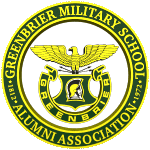

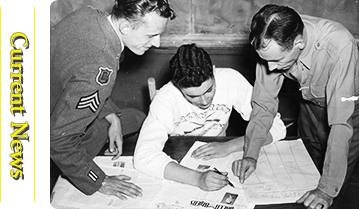
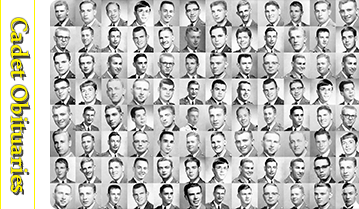

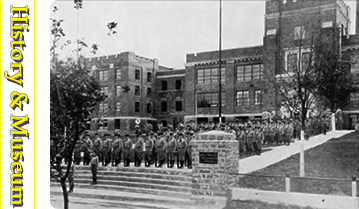

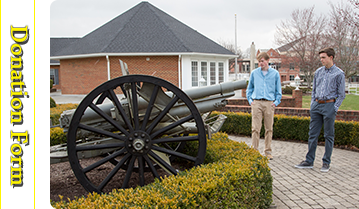
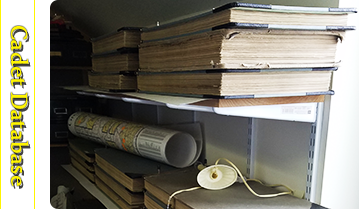
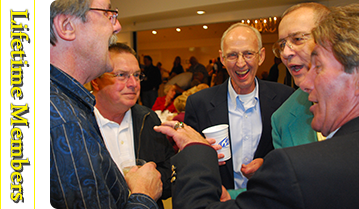
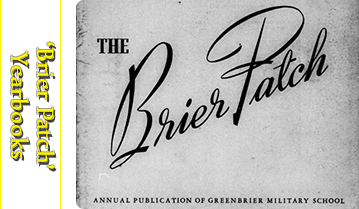
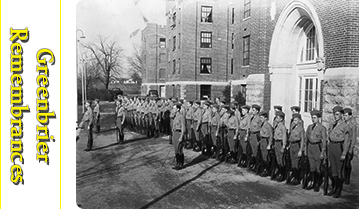


Comments
Tex
Tex wow you made it.
Thanks for your service !!!!!
It was truly an inspiration
It was truly an inspiration to serve with you as a member of KISS. You had a great influence over the rest of my career.